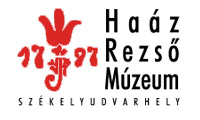Kovács Petronella (szerk.): Isis - Erdélyi magyar restaurátor füzetek 14. (Székelyudvarhely, 2014)
Mester Éva: Nagyméretű üvegfestmények "in situ" vagy műtermi restaurálása
centuries, almost all Hungarian monarchs had links with Byzantium or Venice, while important trade routes passed through Hungarian towns in the medieval period. Comparison of the findings of the investigations regarding the materials used in the Székesfehérvár mosaics with data available in publications allows the conclusion that materials from Byzantium were used. István Béna Restoring canvas pictures without a vacuum table Writings which introduce modern methods of restoration for the most part report on the results that can be achieved using expensive up-to-date equipment. Vacuum tables were widely used in the 1960s. Subsequently, equipment was employed which utilised low levels of pressure, while later on various ‘vacuum pocket’ procedures were applied. However, many well-trained conservators were obliged to work without access to such equipment. According to the author, after different treatments using expensive equipment, paintings mostly become too ‘perfect’, smooth and even in a way that they never were before. According to the modem principle of ‘minimum intervention, maximum result’, conservation performed by hand with results that are not ‘perfect’ is also acceptable. Often, innovation does not strive to improve apparatus, but seeks methods of intervention that are more and more gentle. For example, with the aim of reducing damage, conservators frequently try to treat and reinforce pictures in such a way that the stretchers are not straightened out. The study presents the following methods: smoothing out using cool moisture, smoothing out using a moisture chamber, smoothing out using stretchers and magnets, stretching out using springs, reattachment of paint and the smoothing out of unevenness with the help of magnets. Stretchers and the use of moisture can be combined. If it is possible to make a moisturising tent into which a stretched picture is able to fit, the work can be very much speeded up. The author shows the suitability of the above procedures in conservation tasks that he himself has performed, among them the smoothing out of undulation on largesized pictures that has developed for various reasons. Máthé Zsolt Evaluation and conservation of painted furniture from the 19th and 20th centuries with the help of the Mihai Eminescu Foundation, Sighişoara (Segesvár), Romania The Mihai Eminescu Foundation (MET) was founded in Britain in 1987. Its goal was to support Romanian poets and writers, in the interests of maintaining links with Western countries. Over time, this aim changed, and it worked to protect Transylvanian villages marked out for erasure in the interests of industrialisation. This heritageprotection work began in Transylvania’s Saxon villages, since the built environment there was in danger after the moving out of the Saxons. The MET attaches importance to the co-operation of the inhabitants in the preservation and revival of the cultural, built, and natural heritage in Romania. It has therefore launched an initiative, the socalled Independent Village Project. The project’s goals are the development and support of local enterprises and economic life, as well as the protection and conservation of the cultural and natural heritage. In 12 years, more than 1100 projects - from the renovation of houses and roofs to the conservation of church and castle walls - have been carried through successfully in 49 villages and 6 towns. In the settlements participating in the Independent Village Project, the MET converts architectural monuments into places where people can stay. These buildings also serve as miniature museums for surviving folk furniture and fittings from the locality and neighbouring areas. When these places of accommodation were established, artefacts were brought to a single place from various households, bams, and cellars. On the basis of an inventory and an assessment regarding condition that were made not long ago, the 15 painted artefacts found to be in the poorest condition will be conserved during the year 2014-2015 with support from Britain’s Horizon Foundation.1 So far, a painted cupboard from Almakerék and a low chest, likewise from Almakerék, have been conserved. During the conservation work, overpainting performed with oil paint was removed, weakened structural elements were made stronger, and missing parts were made good. Retouching of missing paint was performed with aquarelle paint using the tratteggio and ritocco techniques. Later, the painted surfaces of the artefacts were given a protective coat containing dammar resin. Zsuzsanna Tóth The connection between bichrome headbands and different types of bookbinding from the historical perspective The study follows the changes in the best-known types of headband, discussing not just the headbands themselves, but also their linkage to bookbindings of various kinds. Bichrome headbands occur on books from the late 15th century already. Today, headbands with this type of stitching are still being made for books bound by hand. In more than 500 years, headbands have hardly changed in appearance, but their linkage with the sewing and the boards of books has evolved continuously with the changes in the types of binding. At the same time, the changes have meant a gradual weakening of the linkage, since to begin with the core of the headband served a holding function, rather like a band, while later on already it was attached For more details, see www.horizonfoundation.info. 142
